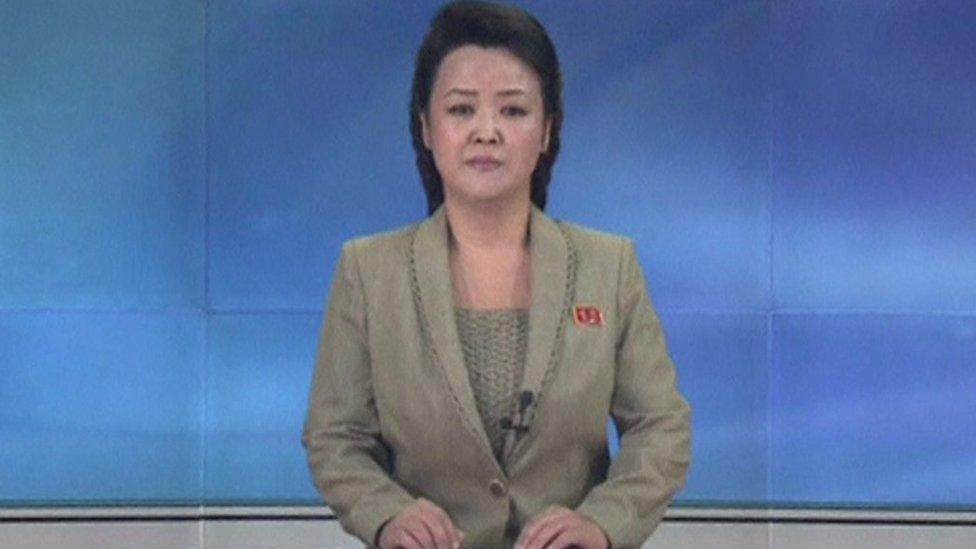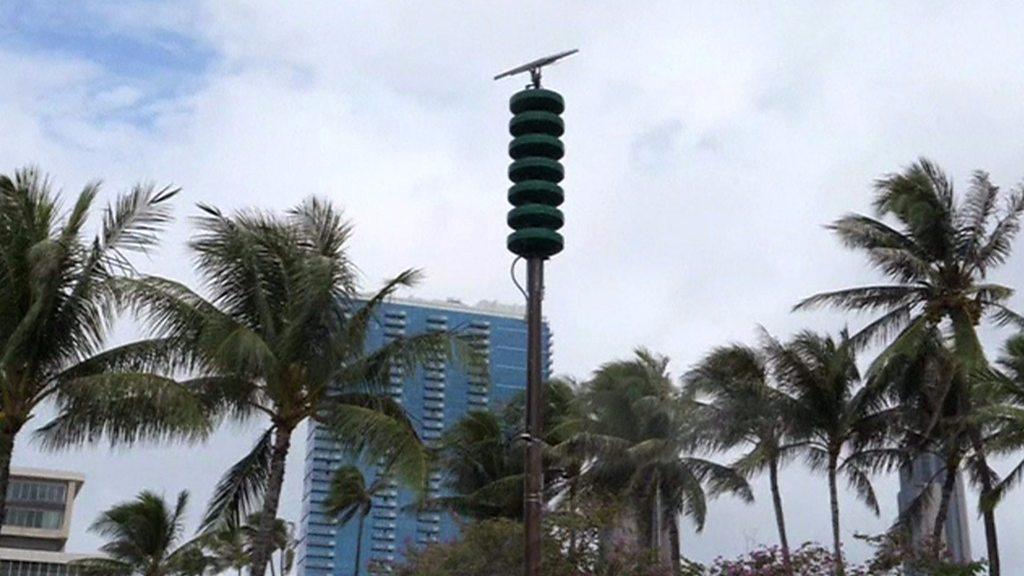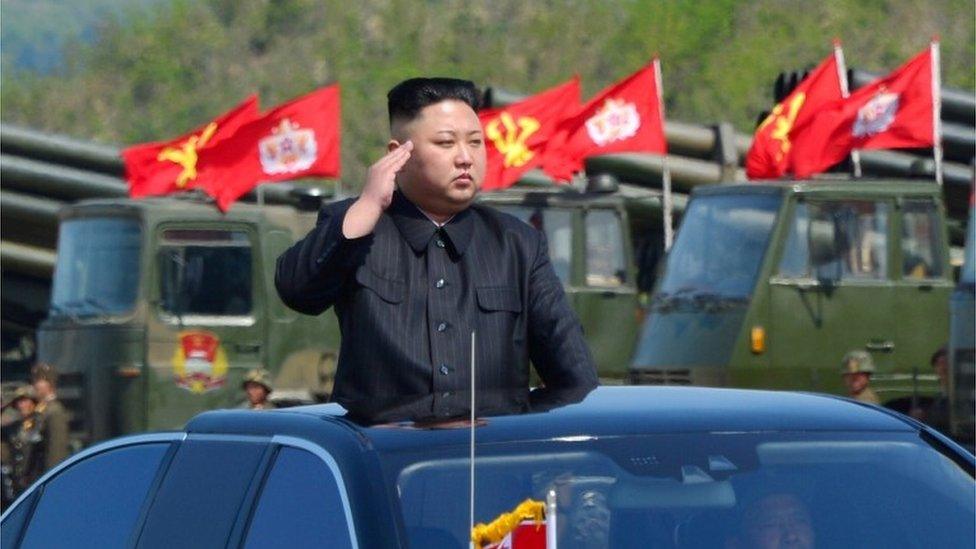North Korea: US in race to address threat, says HR McMaster
- Published
HR McMaster: 'There isn't much time left' to address threat from North Korea
White House national security adviser HR McMaster says the US is "in a race" to address the threat from North Korea.
The potential for war is increasing every day but armed conflict is not the only solution, he told a defence forum.
His comments came three days after North Korea carried out its first ballistic missile test in two months, in defiance of UN resolutions.
The latest missile flew higher than any others previously tested, before falling into Japanese waters.
Tensions have heated up in recent months over the north's continued development of its nuclear and missile programme, in spite of global condemnation and international sanctions. Pyongyang conducted its sixth nuclear test in September.
A statement read on North Korean state-run TV blamed the "reckless nuclear war mania of the US" for any possible escalation
The Pentagon was also reported to be scouting sites on the west coast of America to deploy extra defences, amid claims from North Korea that its latest missile could reach the whole of continental United States.
President Donald Trump's national security adviser gave his unscripted comments at a forum in California on Saturday.
"There are ways to address this problem short of armed conflict, but it is a race because he's getting closer and closer, and there's not much time left," Mr McMaster said, in reference to North Korean leader Kim Jong-un.
How could war with North Korea unfold?
He singled out China, urging the Beijing government to enforce a total oil embargo on the north to make it difficult to fuel missile launches.
"We're asking China to act in China's interest, as they should, and we believe increasingly that it's in China's urgent interest to do more."
"You can't shoot a missile without fuel," he added.
North Korea, meanwhile, has accused the US and neighbouring South Korea of being warmongers ahead of large-scale joint air exercises between the two allies that begin on Monday.
"It is an open, all-out provocation against the DPRK [North Korea], which may lead to a nuclear war any moment," an editorial in the ruling party's Rodong newspaper said.
North Korea said the Hwasong-15 missile it fired on Thursday, which reached an altitude of 4,475km (2,780 miles) and flew 950km in 53 minutes, could have been tipped with a "super-large heavy warhead" capable of striking the US mainland.
North Korea said in November its latest missile was capable of reaching Washington DC
However, while analysts agree the missile could have travelled more than 13,000km on a standard trajectory and reached the US, they have cast doubts over whether the missile would have been able successfully to carry a heavy warhead that distance.
They do not believe North Korea has mastered the technology to prevent the warhead from breaking up as it re-enters the Earth's atmosphere.

Reuters news agency reported on Sunday that research was under way to locate new sites on the US west coast for the possible installation of Terminal High Altitude Area Defense (Thaad) anti-ballistic missiles, similar to those already deployed in South Korea to protect against potential attacks from the north.
It quoted two congressmen, who said the Missile Defense Agency (MDA) was aiming to install extra defences, although no details on locations or timing were given.
However, the MDA, which is part of the US defence department, says it has not yet received instructions to deploy Thaad systems.
Two Thaad systems have already been deployed to South Korea and the US Pacific territory of Guam, which is 3,400km from Pyongyang.
In August, Kim Jong-un announced plans to fire medium-to-long-range rockets towards Guam, where US strategic bombers are based alongside more than 160,000 US citizens.
Thaad systems are able to shoot down short and medium-range ballistic missiles in the terminal phase of their flight using hit-to-kill technology where kinetic energy destroys the incoming warhead.

- Published3 December 2017

- Published2 December 2017

- Published9 August 2017

- Published10 August 2017